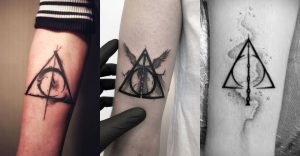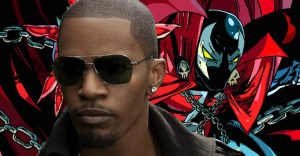Star Wars: 5 Reasons Why Reylo Being Canon Is A Good Thing (& 5 Why It’s Bad)

The relationship between Rey and Kylo Ren in the Star Wars sequel trilogy is, like the movies themselves, a topic of controversy in the fandom. Some fans support their canonical relationship, believing their bond to be an example of balance, whilst others reject the Reylo ship as toxic and unhealthy.
Reylo finally had their moment in The Rise of Skywalker (TROS), sharing a kiss seconds before a redeemed Ben Solo dies after giving his life force to Rey. The two characters were presented as equals in the Force, but does this make them better lovers or enemies? Here are five reasons why Rey and Kylo’s romantic relationship was a good thing and five reasons why it’s not.
10 Good: They’re Force Dyads

Kylo refers to himself and Rey as “two that are one” and their connection is prevalent throughout the series. As Force dyads, Rey and Kylo are two sides of the same coin and their combined power is near limitless.
Palpatine manipulates the bond between Rey and Kylo in TROS to restore his strength. This connection also explains how Rey and Kylo were able to heal each other using the Force, it’s strength signals good things could come of a relationship between the two.
9 Bad: They Were Enemies

Rey and Kylo Ren spent the majority of the sequel trilogy fighting each other on opposing sides of the Force. Rey fought with the Resistance whereas Kylo spearheaded the First Order, and their clashing ideologies mean they could never have been together.
Rey tells Kylo this in TROS, saying that she wanted to take Ben’s hand instead. It is after this that Leia reaches out to her son, bringing him back to the Light at last, but it might be just too little too late.
8 Good: They’re Equals

Rey and Kylo were both overpowered in the sequel trilogy, though it became prevalent, especially in TROS, that they were equals in every sense. This balance between masculine and feminine power is important and represents true equality in the Force.
Rey is shown in TROS becoming increasingly more isolated, making Ben’s death at the end of the film more tragic. Despite their past, Ben was her equal in every sense and the only person who could truly understand her.
7 Bad: They Nearly Killed Each Other

Reylo may have had their space kiss at the end of TROS but that doesn’t erase their previous battles throughout the films. Both characters have tried to kill each other and fought to cause the other grievous bodily harm.
Rey nearly succeeds in killing Kylo during TROS, stabbing him with his lightsaber in a call-back to Han’s death in TFA. However, she immediately heals his wound by giving him some of her life force, indicating that, despite his actions, she wasn’t capable of killing him.
6 Good: Rey Encouraged Ben’s Redemption

Rey and Kylo Ren could never have worked as a couple, but Rey and Ben Solo would have had more success. Rey encouraged Kylo to turn away from the Dark side during TLJ and is partly responsible for Ben’s redemption during TROS.
Ultimately it is Ben’s parents, Han and Leia, who reach out to their son and bring him back. However, Rey was his motivation to be a better person and Ben demonstrates this when he gives his life force to her.
5 Bad: Rey Doesn’t Need A Partner

One of the criticisms for the Reylo pairing is that Rey does not need a romantic partner in the Star Wars sequel trilogy. As the leading lady, Rey’s journey should focus more on her journey as a Jedi rather than lingering on her love life.
Rey is the heroine of the sequel trilogy and there is no doubt that her character doesn’t require a love interest. However, Han and Leia shared an iconic affair in the original trilogy whilst remaining fan-favorite and proactive characters.
4 Good: Ben Gave His Life To Save Rey

During the climax of The Rise Of Skywalker, Rey and Ben Solo confront Emperor Palpatine and finally defeat the evil Sith Lord, with Rey channeling the power of every Jedi. This kills Rey, though Ben sacrifices his life for hers and heals her with his life force.
This sad moment comes seconds after Rey and Ben finally share a kiss. It’s a tragic twist but shows how much Ben truly loved Rey.
3 Bad: Kylo Ren Killed Countless People

Kylo may have turned away from the Dark side in The Rise Of Skywalker and embraced his true identity as Ben Solo, but this doesn’t take away from the staggering amount of people he killed whilst working for the First Order. We first meet Kylo in The Force Awakens as an effective killer and it takes three films for him to embrace the Light again.
Rey may love Ben Solo but realistically she would have a hard time reconciling the man she loves with the monster who murdered many. Her friends in the Resistance would be unwilling to accept him, leaving her further isolated.
2 Good: They Have Chemistry

The chemistry between actors Daisy Ridley and Adam Driver throughout the Star Wars sequel trilogy is undeniable. From their first scene together, it is obvious that Rey and Kylo share a connection and their chemistry makes the sexual tension between the two characters more palpable.
Ridley and Driver work well together in all of their scenes. They work well to portray the bond between Rey and Kylo whether they are fighting together or against each other.
1 Bad: Their Relationship Isolates Rey

As Rey’s connection with Kylo Ren grows stronger, her friendship with Finn and later Poe becomes more estranged. Kylo holds no regard for Finn as an ex-Stormtrooper and attempts to kill him in TFA, and, as the rest of her friends are Resistance members, there is little chance of him encouraging other relationships.
As Ben Solo, he might encourage Rey to spend time with her friends more, but Finn and Poe could never truly embrace Ben after fighting him and the First Order for so long. Eventually, Rey would have to choose between her lover and her best friends.
About The Author

















